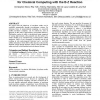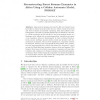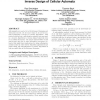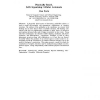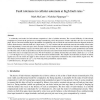16 search results - page 2 / 4 » Using cellular automata and gradients to control self-reconf... |
GECCO
2007
Springer
13 years 11 months ago
2007
Springer
We propose that the behaviour of non-linear media can be controlled automatically through coevolutionary systems. By extension, forms of unconventional computing, i.e., massively ...
ACRI
2004
Springer
13 years 10 months ago
2004
Springer
Large areas of savannas are found in Africa in climatic zones favourable to humid tropical forests: they are relicts of past dry periods and forest domains are naturally expanding....
GECCO
2008
Springer
13 years 6 months ago
2008
Springer
Self-adaptation is used a lot in Evolutionary Strategies and with great success, yet for some reason it is not the mutation adaptation of choice for Genetic Algorithms. This poste...
DAI
1998
Springer
13 years 9 months ago
1998
Springer
A physically based system of interacting polyhedral objects is used to model self-assembly and spontaneous organization of complex structures. The surfaces of the polyhedra in the ...
JCSS
2008
13 years 5 months ago
2008
A commonly used model for fault-tolerant computation is that of cellular automata. The essential difficulty of fault-tolerant computation is present in the special case of simply ...
